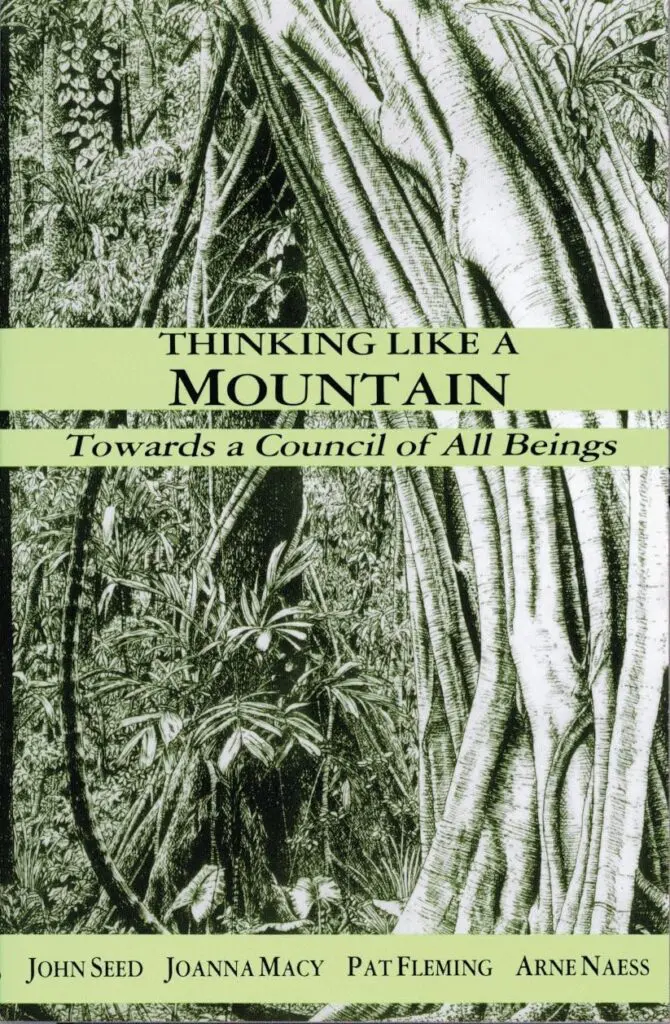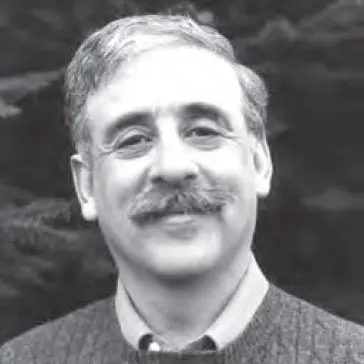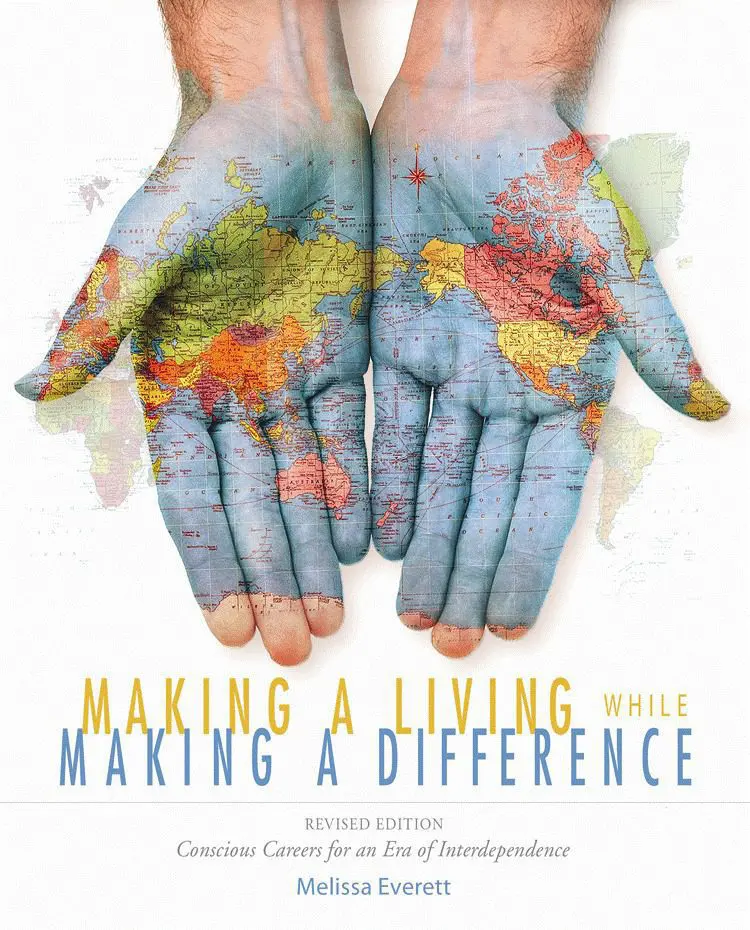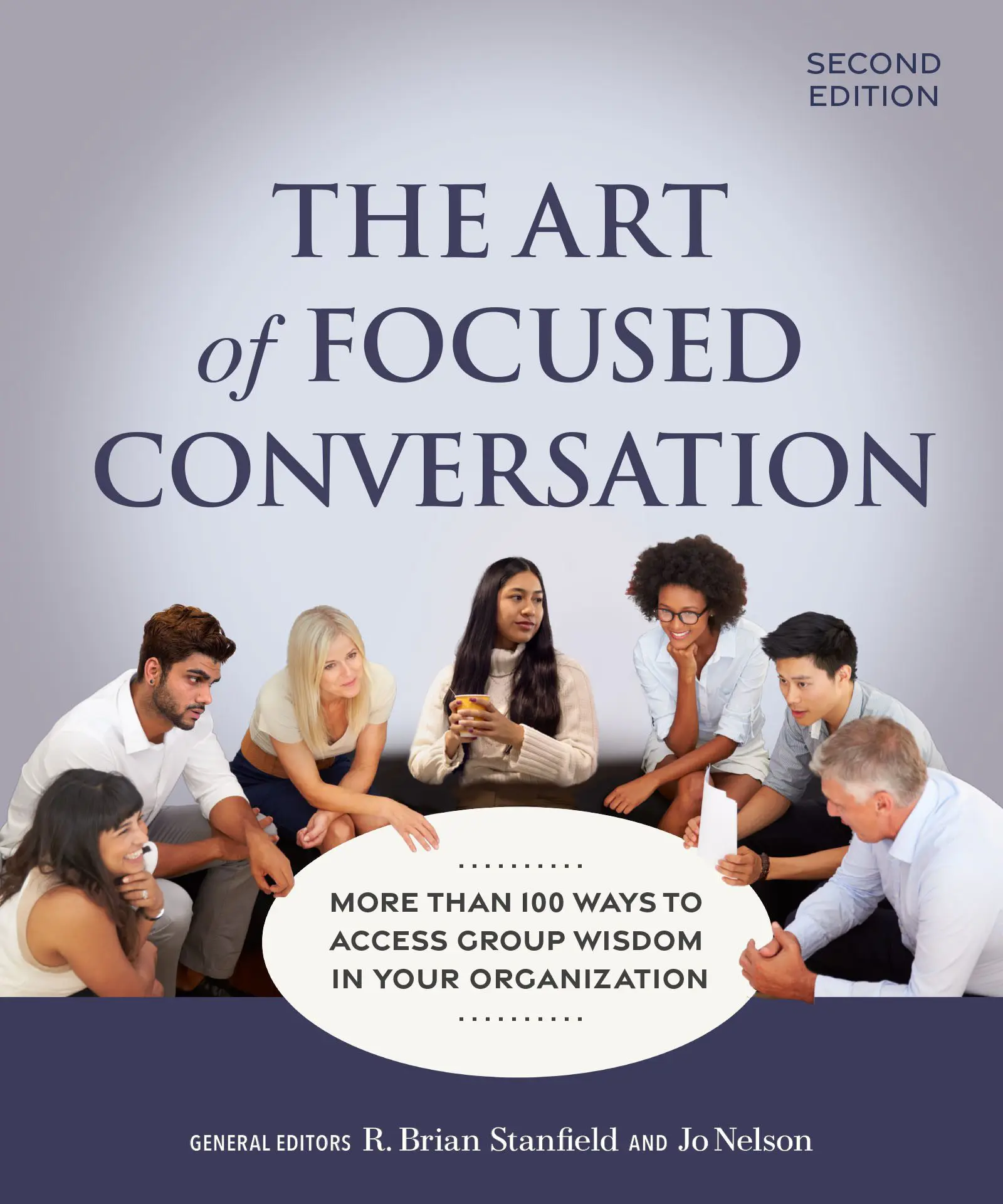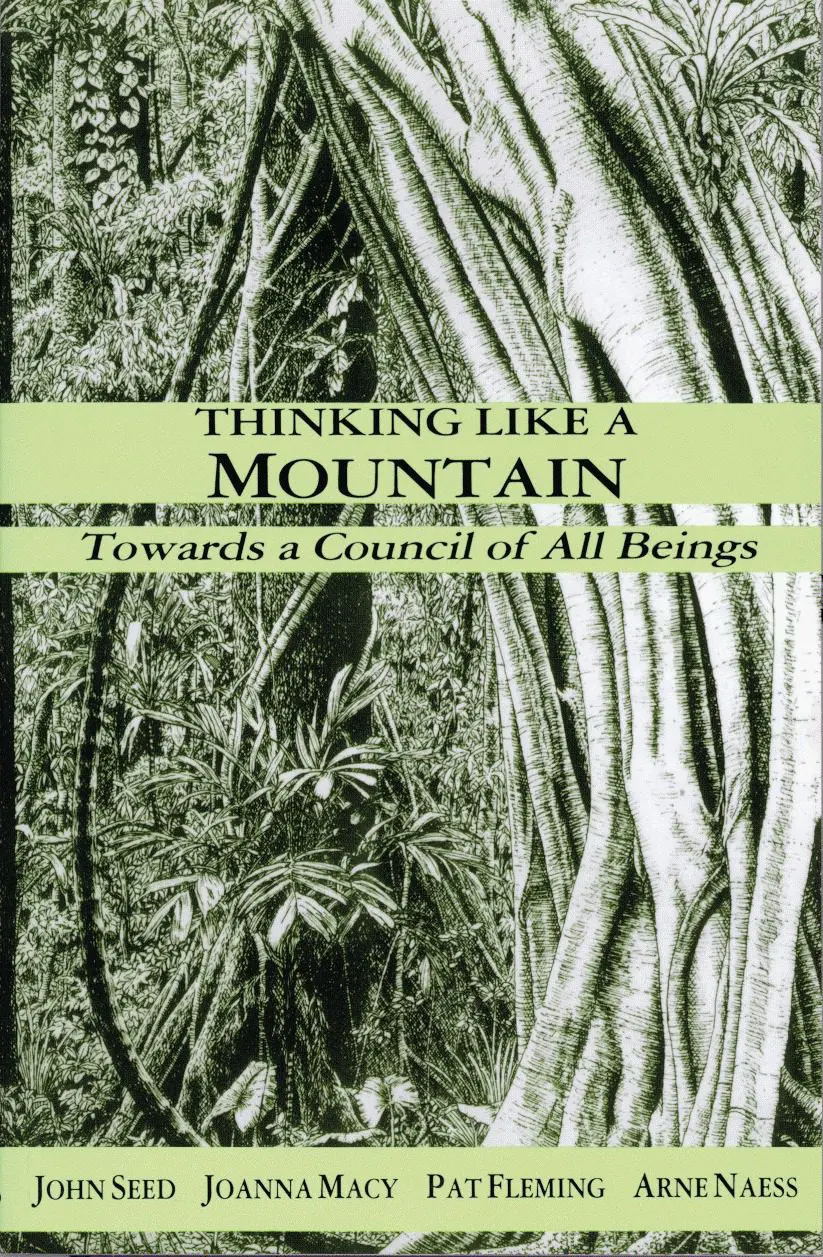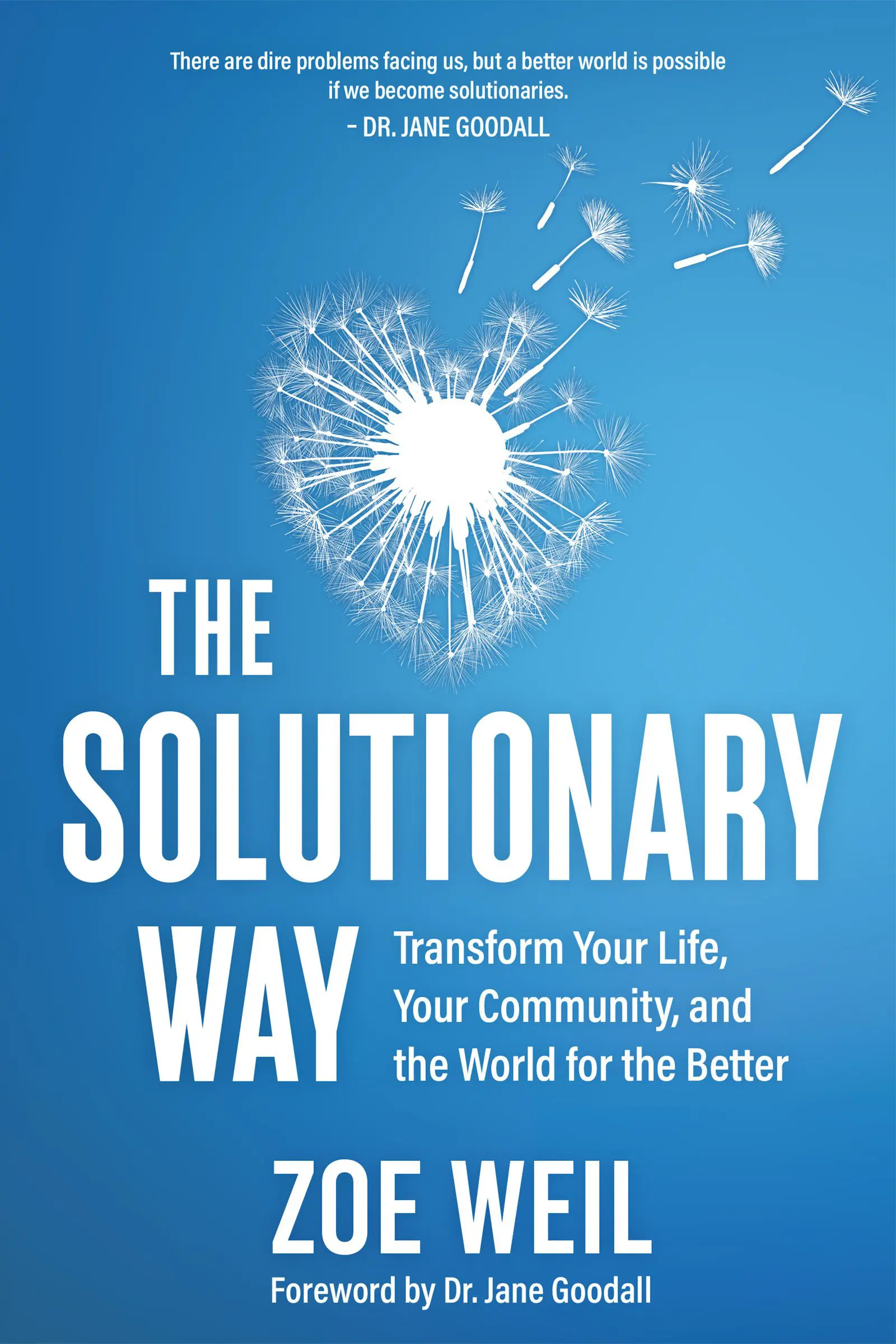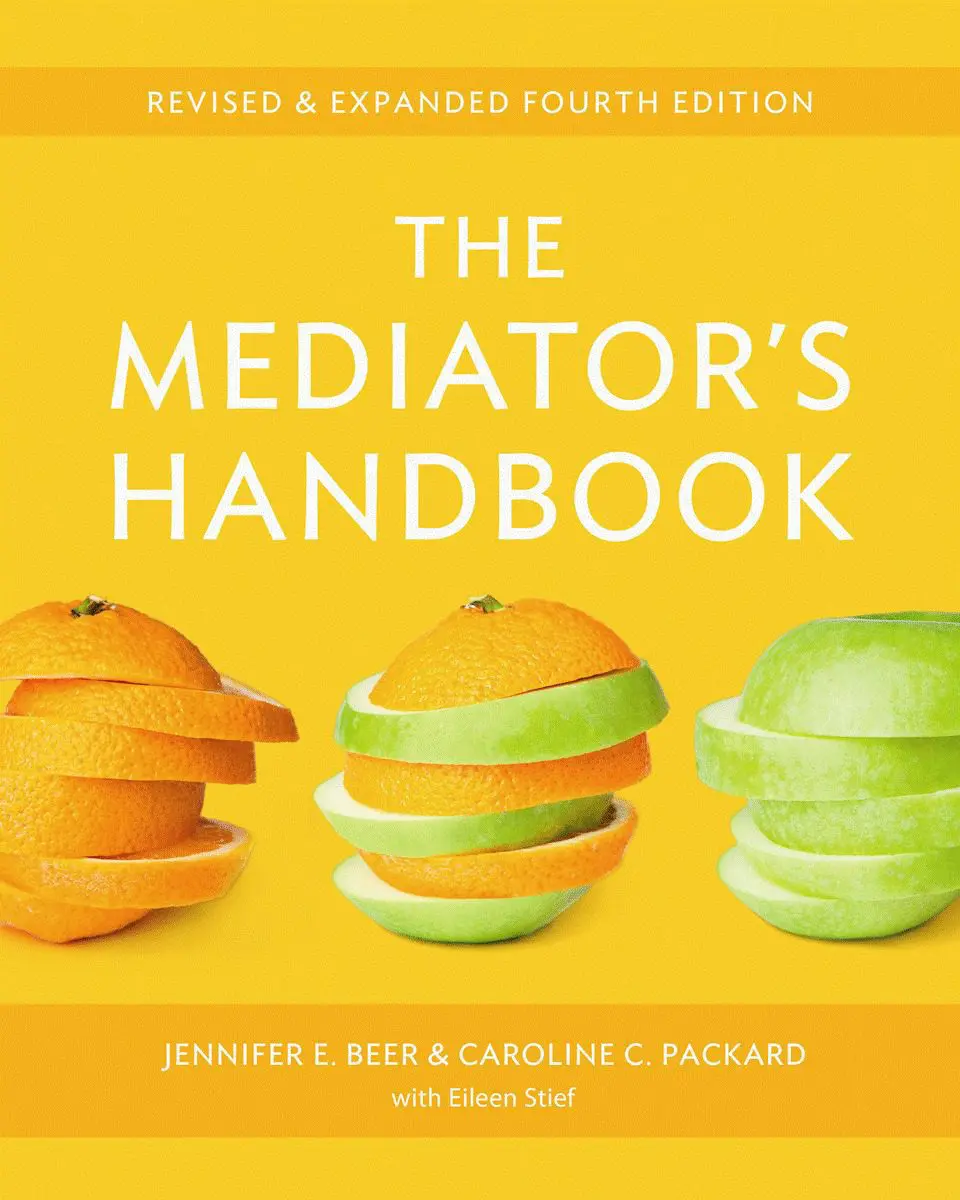
David Albert, one of the founders of the Movement for a New Society, authored this blog.
Founded in 1980, New Society Publishers emerged from the Movement for a New Society (MNS), drawing inspiration from Gandhi and Martin Luther King Jr. This pioneering publishing house empowers global movements for justice and sustainability through literature that serves as a compass and toolkit for activists worldwide. Covering nonviolent activism, feminism, environmental sustainability, and alternative economics, their publications provide practical insights and inspiration for a better future. Join us as we explore New Society Publishers’ impactful journey in shaping a world committed to positive change.
Mission
Celebrating its 40th Anniversary in 2020, from its very inception, New Society Publishers has been an activist, solutions-oriented publisher focused on providing tools, skills, and resources for a world of change. It is firmly rooted in the Gandhian tradition of nonviolence, not just through resistance and direct action, but also through embracing a broad social transformation toward both justice and sustainability. New Society brings “good news to the struggle” internationally, even as we provide cutting edge ideas, new analysis, inspiration, and practical tools to change the world.
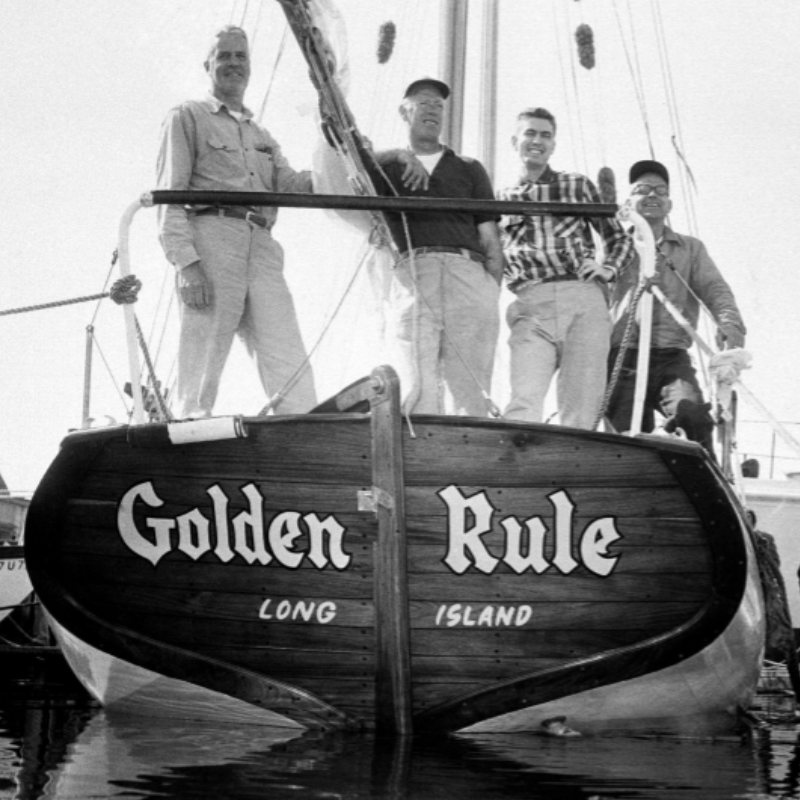
Pre-History
While New Society Publishers was officially founded in 1980, it has a direct prehistory that goes back to 1958. In that year, four American pacifists, led by Quaker activists Albert Bigelow, William Huntington, and George Willoughby, set off to sail the boat “the Golden Rule” into the U.S. nuclear testing range in the Pacific Ocean.
The journey and their subsequent imprisonment set off the modern multinational movement to oppose nuclear weapons around the world, and leading directly to the Nuclear Test Ban Treaty of 1963. The actions of the Golden Rule (and a second boat, the Phoenix, which actually made it into the testing range) were also the direct inspiration for the founding of Greenpeace in the late 1960s, and the Sea Shepherd Society. George Willoughby was later to be a cofounder of Peace Brigades International, which aims to protect human rights and engage in the nonviolent transformation of conflict around the globe.
With Dr. Martin Luther King, Jr. adopting many of the tactics and strategies of Mohandas Gandhi to the needs of the Civil Rights struggle, many other social change activists, also influenced by Gandhi, also heeded the call. (Martin and Coretta Scott King met many of them in 1959 at the War Resisters Triennial Conference held in Gandhigram, Tamil Nadu, India, where they stayed at the Workers Home of S. and Krishnammal Jagannathan, former winners of the Right Livelihood Award.) Many of them went South to aid in the struggle there, but were also engaged in struggles for equal housing, fair accommodations, and better education in the northern part of the U.S.
Around 1971, more than 125 social activists joined together to form Movement for a New Society (MNS), with 20 communal houses in West Philadelphia, operating jointly as a nonviolence training center. There were smaller ones elsewhere. Influenced by earlier Gandhian experiments in collective living and working, of “being the change you want to see in the world”. MNS brought together a radical analysis, a commitment to simple living “as if the earth really mattered”, and new ways of living, working, and learning together.
The rest of the world was not ignored in this. Besides work against the ongoing war in Viet Nam, MNS launched a successful kayak and canoe blockade of several ships in Philadelphia harbor bringing arms secretly supplied by the U.S. government to Pakistan to be used against the people of Bangladesh.
MNS also launched another campaign “Books for a Free Namibia”, calling attention to the freedom struggle of the Namibian people by sailing a boatload of books down the West African coast. MNS activists also organized a ‘nonviolent presence’, an attempt at nonviolent intervention, at the Wounded Knee standoff between American Indian activists and the U.S. government.
MNS launched a series of democratically-led study groups called “Macroanalysis” in more than 60 communities, including some internationally. The study approach brought together global analysis and research, combined with strategies and tips for practical action at both the personal and community level. Many new materials were generated from this activity, among which one, titled “Developing the U.S. through Nonviolence” by Bill Moyer, was prophetic in speaking to global economic and ecological conditions as they exist in 2020.
MNS found itself at the center of the anti-nuclear power movement beginning in late 1976. MNS trainers were active in training groups in nonviolent discipline, decision-making, strategy and tactics in New Hampshire, Vermont, California, South Carolina, Colorado, Minnesota, and elsewhere, both before and after the episode at Three Mile Island in Pennsylvania. Many MNS members were jailed, where they continued training activities.
The Need for Printed Resources
Each of the activities and movements referred to above (and many more) required printed materials, everything from simple handouts with nonviolence guidelines, to strategy tools, to background information to each of the struggles, to deeper analytic works. The MNS “Dandelion Collective” worked furiously to try to supply these resources to burgeoning efforts, both in the U.S. and abroad (the latter effort being led by George Willoughby of Golden Rule fame),
But it became clear that a full-scale publishing house was needed, one that could amalgamate all these disparate efforts, and also distribute materials and develop new resources for a broader audience. It was in this context that New Society Publishers was born.
New Society Publishers – The First 11 Years
From its inception, New Society Publishers was a worker-controlled collective, originally incorporated as a non-profit, tax-exempt corporation, along with a charitable arm, New Society Educational Foundation (which mostly operated a national Books for Prisoners library) None of the members had any background in book publishing, but were freely educated by would-be competitors, suppliers, and sales representatives. Publishing decisions were made by consensus, and the collective got to practice some of the skills and tools then introduced to a larger public. One of these was Marshall Rosenberg’s A Model for Nonviolent Communication, which was to spawn an international movement (and publishing house all of its own.) The collective also adopted the guidelines in Leadership for Change: Towards a Feminist Model by Bruce Kokopeli and George Lakey, and published as well.
The first major publication was Resource Manual for a Living Revolution, also affectionately known as “the Monster Manual”. In some ways it was an activist cookbook, bringing together tips on how to run a meeting, how to set up a conference, how to arrange food for large numbers of people, how to set up peacekeeping operations at demonstrations, how to write press releases and work with the media, how to strategize, and much, much more. Tens of thousand of copies were sold, and it was translated into multiple languages, and was used as a “bible” in the Seabrook Nuclear Plant occupation and elsewhere.
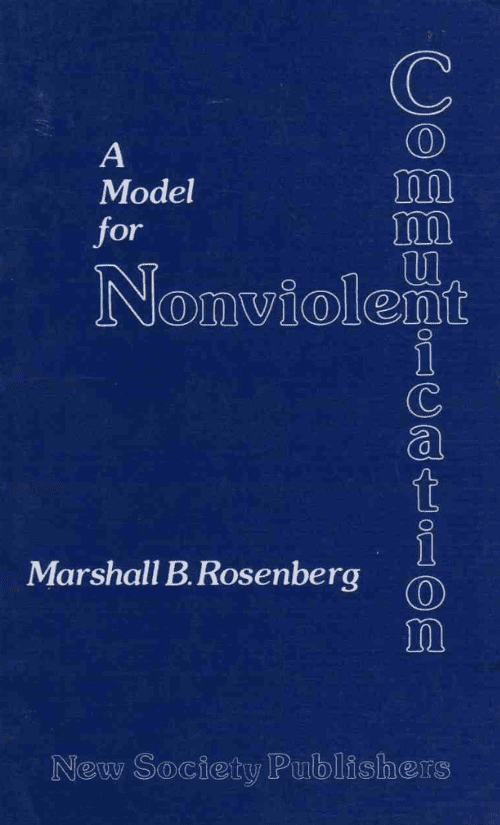
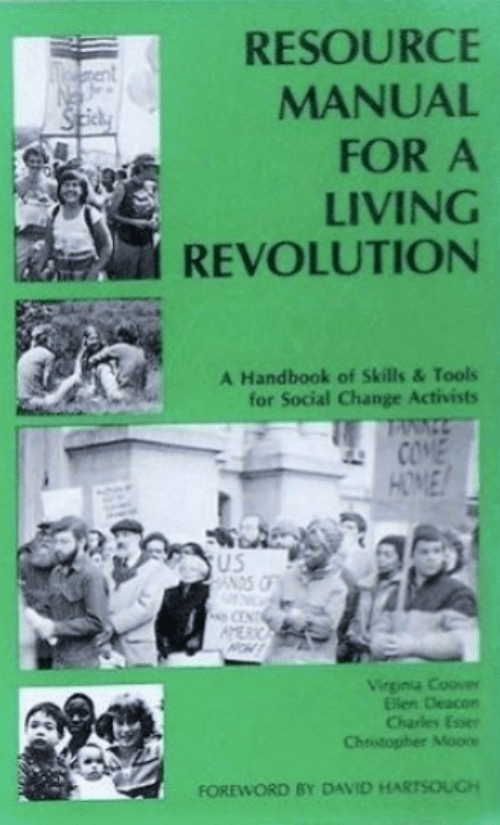
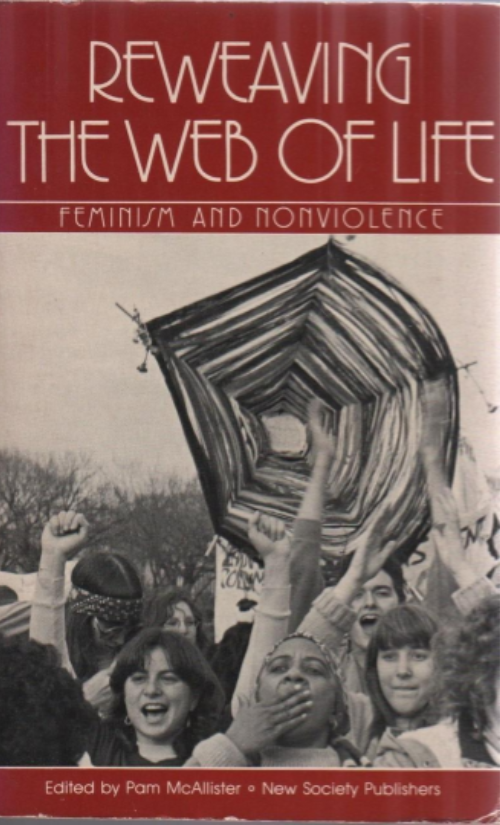
The early 1980s saw an explosion of women’s activism around the world, from the Greenham Women’s occupation of a U.S. nuclear base in England to a major women’s peace march on Washington, DC. In support of these activities and to deepen historical knowledge of women’s roles in nonviolent struggle internationally, some 56 authors contributed to Reweaving the Web of Life: Feminism and Nonviolence, edited by Pam McAllister. The first “trade” book New Society Publishers produced, Reweaving went through four editions. Pam McAllister then took on the editing of a series of books related to women and nonviolence, beginning with We are All Part of One Another: A Barbara Deming Reader (edited by Jane Meyerding.) and two more books that delved deeply and across time, nations, and cultures into the history of women’s role in nonviolent action, You Can’t Kill the Spirit and This River of Courage. Another important work published in this period was This Way Daybreak Comes: Women’s Values and the Future by Annie Cheatham and Mary Clare Powell. This book is a futuristic distillation of women forging new paths: new kinds of families, new forms of art, new political models, new efforts at restoration of the natural balances and rhythms of the planet, as well as redefinitions of roles, relationships, and responsibilities, and the possibilities of creative change.
During this entire period, New Society Publishers went about the task of bringing a greater awareness of the roots of active nonviolence to the forefront. New editions of Albert Camus’ Neither Victims Nor Executioners and Leo Tolstoy’s Writings on Civil Disobedience and Nonviolence (edited by David Albert) were published, as were collections from Muriel Lester (Ambassador of Reconciliation, edited by Richard Deats) and new essays about the Catholic Worker movement A Revolution of the Heart (edited by Patrick McCoy and Jim Douglass). Horace Alexander’s Gandhi Through Western Eyes was also republished. A pictorial history The Power to the People: Active Nonviolence in the United States (edited by Robert Cooney and Helen Michalowski) was published alongside The Universe Bends Toward Justice: A Reader on Christian Nonviolence (edited by Angie O’Gorman.)
Two books in particular were read and used by activists worldwide. George Lakey’s Powerful Peacemaking: A Strategy for a Living Revolution was studied by activists seeking a path to social justice without feeling a “need” to resort to violence. (Lakey’s Manual for Direct Action had been used heavily in the Black Freedom struggle in the 1960s.) A much shorter work People Power: Applying Nonviolence Theory by David Albert brought together pointers in how to make practical use of the theory of nonviolence in social and political conflict situations. It was translated into dozens of languages. One translation, into Tagalog, was utilized by Catholic nuns who ended up blocking tanks with their bodies during the overthrow of the Marcos’ dictatorship in the Philippines. Both books are still being used 35 years later. Relentless Persistence: Nonviolent Action in Latin America, edited by Phil McManus and Gerald Schlabach, provided case studies of the use of nonviolent action, some of it firsthand.
Two broadsheets were produced in hundreds of thousand of copies. The first one Why Nonviolence? introduced the history, philosophy, and strategies of nonviolence direct action to thousands of activists who had little or no experience with them previously. The second Energy for a New Society: Visions of a People’s Energy Future introduced many people for the first time to the idea of a society and world no longer dependent upon fossil fuels.
An extraordinary activist/author Melissa Everett wrote and edited three books that combined global analysis with the stories of people who committed significant portions of their lives in the causes of peace and social justice. The first was Bearing Witness, Building Bridges: Interview with North Americans Living and Working in Nicaragua. The second was the award-winning and Pulitzer Prize-nominated Breaking Ranks: The Riveting Inside Stories of Ten Men Who Left Comfortable Jobs in the Military, the Intelligence Community or the Defense Industry to Work, in Their Own Ways, for Peace. The third was Making a Living While Making a Difference: The Expanded Guide to Creating Careers with A Conscience.
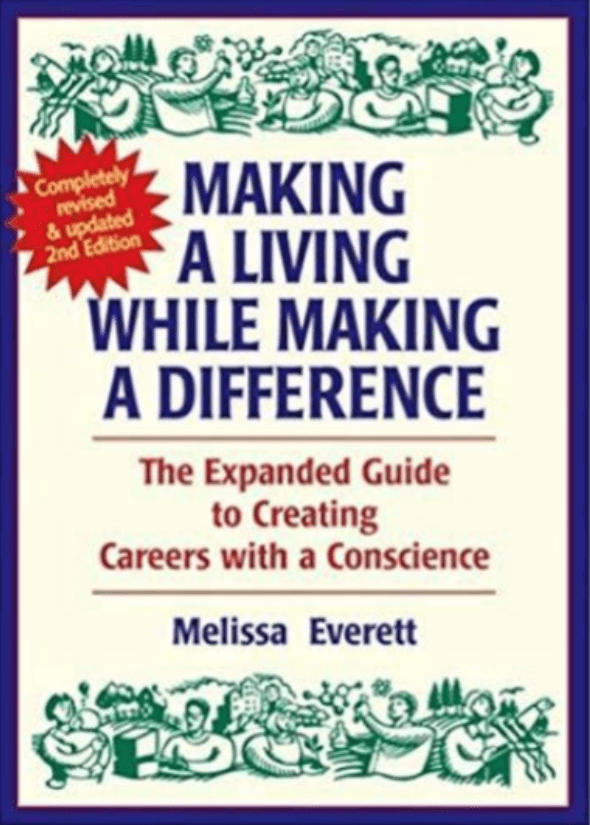
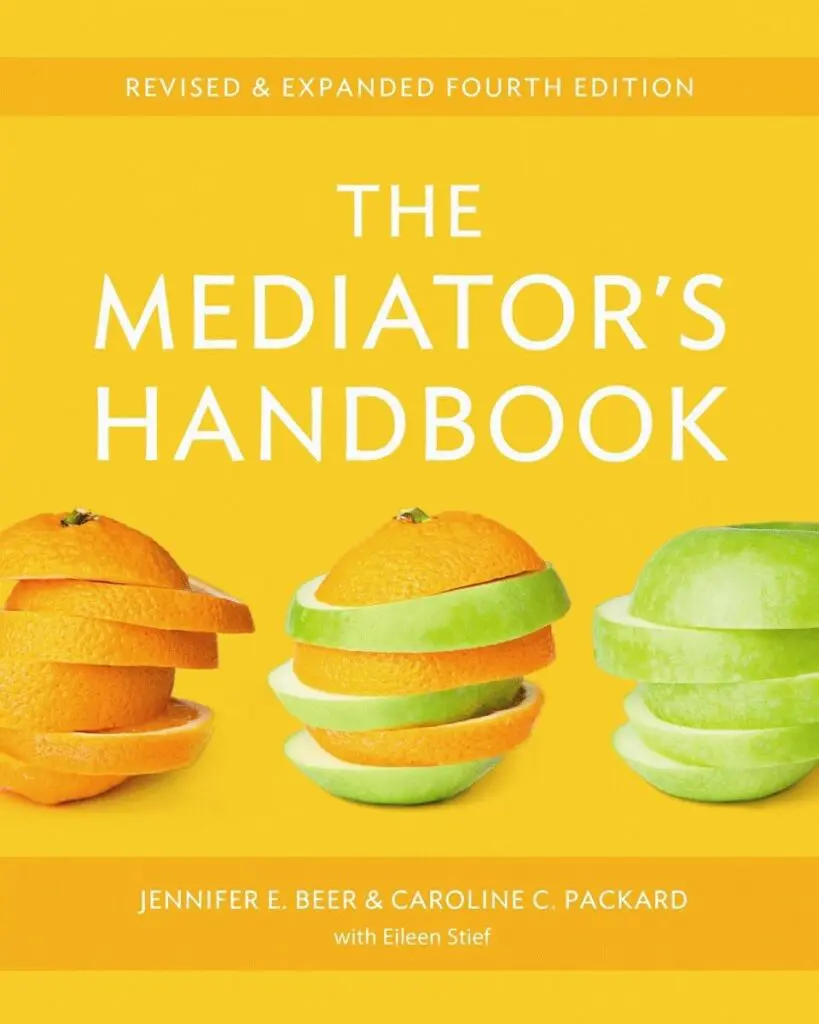
Children weren’t forgotten either. A Manual on Nonviolence and Children by Stephanie Judson and Keeping the Peace: Practicing Cooperation and Conflict Resolution with Preschoolers by Susanne Wichert provided practical skills in working toward the development of a peaceful generation. Watermelons Not War! A Support Book for Parenting in the Nuclear Age by Kate Cloud provided tips on what to do at home after the anti-nuclear demonstrations had ended. A young adult novel An Outbreak of Peace by Sarah Pirtle, winner of the Olive Branch Award, was read by teens in schools and in families across North America. In Who’s Calling the Shots? Nancy Carlsson-Paige and Diane Levin confronted the growingly controversial subject of children exposed to war play and war toys. Three-time New York City and New York State Teacher of the Year resigned from his career as a public schoolteacher because of the systemic violence he saw being done to children there. His book Dumbing Us Down: The Hidden Curriculum of Compulsory Schooling, which lays out his thinking, is still in print and selling after almost 30 years.
There were numerous works on conflict management and conflict resolution for groups and communities, perhaps most notably Dr. Jennifer Beer’s Mediators Handbook, now in its expanded fourth edition.
New Society entered into fruitful partnerships with European and Asian publishers and think tanks, making it economically feasible for important resources to reach much wider international audiences. New Society published two groundbreaking works with the Earthscan Institute: the award-winning Africa in Crisis: The Causes and Cures of Environmental Bankruptcy by Lloyd Timberlake, and Natural Disasters: Acts of God or Acts of Man by Anders Wijkman. With the Panos Institute, New Society published the first works on AIDS in the Third World. Women in Development: A Resource Guide for Organization and Action was published with the ISIS Women’s International Information and Communication Service. Many of these titles brought to the fore the grassroots understanding that traditional mainstream approaches to development were in fact part of the problem, rather than the solution. Finally, with Heretic Press, New Society Publishers brought out Guy Brett’s Through Our Own Eyes: Popular Art and Modern History, which examined five popular art movements: the protest patchworks (arpillera) of Chile; agriculture commune paintings in Huxian, China; popular art in Zaire’s Shaba province; the visual testimonies of Hiroshima and Nagasaki survivors; and art produced by the women protestors at Greenham Common in Great Britain, establishing these productions as artistic and social phenomena providing deeper insight into the contemporary world.
Social activists and engaged citizens often experienced anger, grief, and disempowerment when facing the staggering difficulties of making change in a harsh world. Psychologist and Buddhist scholar Joanna Macy developed processes and techniques for people to deal with their grief and reconnect with their own personal power. Her book Despair and Personal Power in the Nuclear Age (as well as future titles by Joanna Macy) forged a movement to transform our pain for the world into compassionate action.
Two other works built on these insights, and brought forth new ones. The first Healing the World: The Promise of EcoFeminism, edited by Judith Plant, looked to the transformative the power of women’s experience in engaging newly engaged threats to local and global ecosystems. The second, Thinking Like a Mountain: Towards a Council of All Beings by John Seed, Joanna Macy, Pat Fleming, and Arne Naess combined theater, therapy, experiential learning, and ritual engagement with the natural world to help people experience our place in the web of life. One of the earliest works of the “deep ecology” movement, councils based on the book were and continue to be held on four continents, and also helped spawn municipal “processions of the species” on Earth Day.
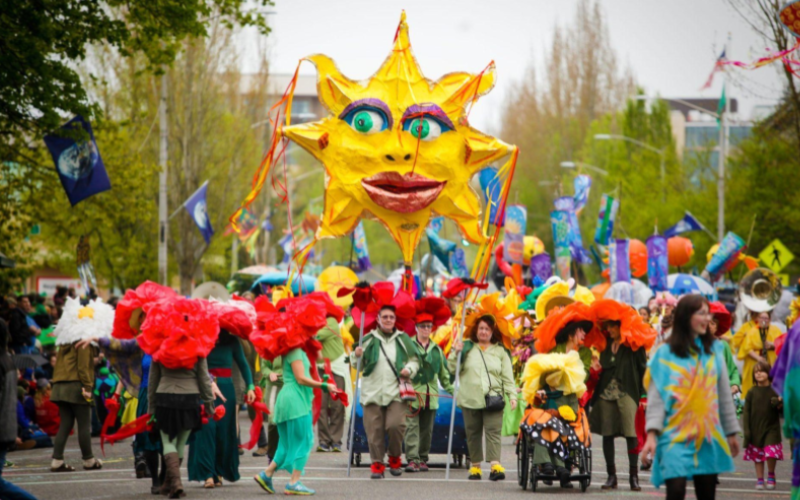
New Society Publishers began to examine the role of macroeconomics in people’s lives, and to explore alternatives. The Poverty of Affluence: A Psychological Portrait of the American Way of Life by clinical psychologist Paul Wachtel explored the real impacts of America’s material wealth on individual, family, and community life. Susan Meeker-Lowry’s Economics as if the Earth Really Mattered: A Catalyst Guide to Socially Responsible Investing was one of the first full-length treatments of how individuals could have an impact on global ecology through impact investing and social enterprise. (This was followed by a later book Invested in the Common Good: Economics as if the Earth Really Mattered that included many case studies of the potential effectiveness of these approaches.) Finally, Roy Morrison’s groundbreaking We Building the Road as We Travel on the Mondragon Cooperatives in the Basque Region of Spain focused not only on an alternative model for capital control of industries and community development, but also the development of “cooperative consciousness” needed to address the atomizing and ultimately globally destructive impact of the pursuit of individual wealth in a capitalist context.
Finally, several resources were published for librarian activists. Though Indian Eyes: The Native Experience in Books for Children, edited by Beverly Slapin and Doris Seale, provided a sensitive reference book for librarians, parents’ groups, and families, with book reviews, poetry, guidelines for evaluating books, resource lists of organization, a bibliography of books by and and about Native Americas and of American Indian authors for young readers. A companion book How to Tell the Difference: A Guide to Evaluating Children’s Books for Anti-Indian Bias was published alongside it.
By the end of its 11th year, New Society Publishers had become the leading progressive peace and social change publishing house in North America, if not the world. It had proven that a collective management structure could work. Its economic base was solvent, stable, and growing. Authors from all over the world sought us out. There were now three offices – in West Philadelphia, Santa Cruz, California, and Gabriola Island, British Columbia. The audience for our books was found to be far, far larger than the initial small coterie of activists. And, it was joyfully discovered that most of our readers were not just interested in a single issue or cause but could embrace a much more profound interpenetration of ideas, analysis, and practical tools and resources for ‘building a new society.’
In the first 11 years, there were books on:
- Nonviolence theory and practice
- Feminism and nonviolence
- Organizing tools
- Effective nonviolent personal and communication skills
- The history of nonviolent action
- Feminist futurism
- Popular art as vehicles of protest
- Alternatives to traditional views of development
- The human causes of environmental degradation
- AIDS and the Third World
- Personal and social witness
- Peacemaking books for children (and those who live/work with them)
- Careers with a conscience
- Transforming grief and despair
- Deep ecology
- Mediation and conflict resolution
- “New” economic paradigms
- Enhancing understanding of Native Americans
- And more!
It was an exciting journey. Much, much more was yet to come.
The Spirit of New Society Publishers
Perhaps the most vivid representation of the spirit of New Society Publishers is the publishers’ note written by David H. Albert, New Society Publishers founder, that is the epilogue to Thinking Like A Mountain: Towards a Council of All Beings (1987):
I am writing this note the day of the birth of my daughter Aliyah Shanti, which literally means “peace arising”
Like virtually all expectant parents, we had been looking forward to her birth. The birth of children, whether biologically ours or not, allows us to “borrow from eternity,” for children provide us a glimpse of a future which, at least within the boundaries of our limited physical selves, we can never know.
But we also approached Ali’s birth with fears that would have been unknown to our ancestors, but which are now widely shared. We worried, most silently and in our nightmares, about environmentally caused birth defects. We worried about whether we could find a place to live that was free enough from industrial or agricultural pollution or urban ruin to be “fit for children.” As we waited for Ali to arrive, it seemed our eyes grew keener at spotting the destruction around us. Two weeks before Ali’s birth, when my partner Ellen and I went into a supermarket to buy paper diapers (just for traveling; we insist on using cloth at home!), Ellen burst into tears at looking at shelves and shelves of what must once have been forests. I do not worry about whether we can provide for Ali’s college education; I do worry about whether we are doing enough to prevent nuclear war so that she will get that far.
Twice today, I have turned on the television and unintentionally found myself rooted to tales of the near extinction of the black-banded ferret in the hills of Wyoming and of the African elephant on the Serengeti plain. Twice on this day I have opened the newspaper to read about the evacuation of sea otters from the Monterey coast to a new “preserve” which (it is said) will prevent the species from extinction in case of oil spills (six of the twenty-four died in the process), and then of the unexplained poisoning of thirty-eight rare brown pelicans only miles from my home.
When I allow myself the emotional space to reflect upon these phenomena, I realize again and again that it is really only one phenomenon: the impending death of our planet caused by our “life support” systems. We are witnesses, held in thrall to, and are even perversely fascinated by our executioner – our own death-dealing modern industrial civilization, fueled in part by our own greed and preying upon the fact that we have lost any true sense of who we really are.
We can, we must, regain that sense, or discover it anew. Without it, we have already died a death more horrible than any we can imagine. That process of rediscovery will not be easy and will not come without struggle; virtually all the forces of our culture, our society, our daily life and what we pass off as an educational system are arrayed against it.
What John Seed and his colleagues bring to this struggle comes naturally to Ali: a sense of new wonderment at our interconnectedness, a way of looking at the world through primordial eyes. In a culture whose god is a narrowly defined efficiency, it is a sensibility which we associate with poets and dreamers, a way of seeing thought to be both inaccessible and perhaps even inappropriate to our daily lives. The special contribution of John Seed, Joanna Macy, Pat Fleming, and Arne Naess is the certain knowledge that this insight, this way of seeing – no, this way of being – is not a function of individual creativity nor something which we can afford to shun, but is our common birthright, one which we can renounce, consciously or unconsciously, only to our deepest peril.
It is in the spirit if the recovery of this birthright, one I can already see in my daughter’s eyes, that New Society Publishers is proud to publish Thinking Like a Mountain: Towards a Council of All Beings. – October 24, 1987
